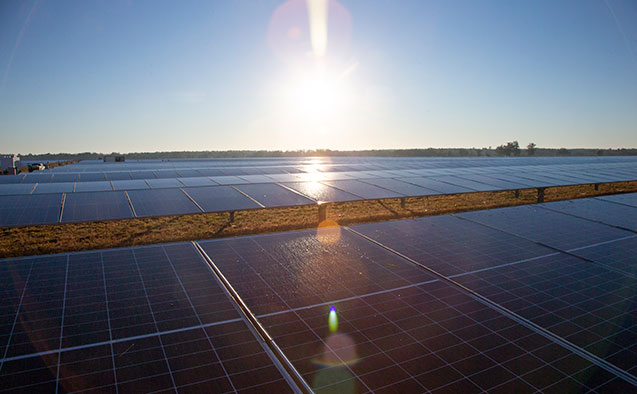
Wake Forest University and eight other colleges and universities in North Carolina and Pennsylvania are joining forces to bring an innovative, large-scale solar facility online in western Kentucky. By collaborating on this Power Purchase Agreement (PPA), Davidson College, Dickinson College, Elon University, Haverford College, Lafayette College, Lehigh University, Muhlenberg College, Swarthmore College and Wake Forest University are accessing the benefits of renewable energy through a deal typically only feasible for large customers.
“Renewable energy is an essential component of our climate action plan,” said Dedee DeLongpré Johnston, vice president for institutional sustainability and chief sustainability officer at Wake Forest University. “Onsite renewable energy at scale is not feasible for most urban and suburban campuses. We’re grateful to be able to collaborate with a consortium of schools to reach this milestone.”
Guided by Coho, an ERM Group Company, the institutions are working with NextEra Energy Resources, the world’s largest generator of renewable energy from the wind and sun, and a world leader in battery energy storage. The consortium is supporting the Sebree Solar II project through a PPA that entails purchasing energy for 20 years. The Sebree Solar II project is set to begin construction in early 2025 and commence commercial operation by the end of 2026. The solar site is projected to provide enough energy annually to power more than 24,000 homes when complete.
The solar facility will be located near the town of Robards, Kentucky, near the Ohio River. The Sebree Solar II project will offer considerable environmental benefits as the project will generate up to 150 megawatts of clean, renewable energy. Over its 30-year lifespan, the solar site will contribute approximately $12 million in additional tax revenue to Henderson County, which can be used for roads, schools and other public services.
While electricity generated by the Sebree Solar II project cannot be transmitted directly to the consortium campuses because of distance, the benefits of investing in new additional renewable energy will still be transferred to the schools. Wake Forest University will be paying for an amount of energy equal to 100% of the electricity used by its campus. In exchange, the University will receive renewable energy credits, which can be used to account for greenhouse gas emissions related to purchased electricity.
The renewable energy credits, combined with other efforts to reduce the impact of the University’s operations, will result in at least a 75% reduction in emissions from operations once the project is online in 2026 – exceeding the University’s interim goal of 50% reduction by 2030
“We are pleased to work with Wake Forest University and the other institutions to help them achieve their sustainability goals,” said Anthony Pedroni, vice president, renewable development and M&A NextEra Energy Resources. “This solar energy project will generate homegrown energy and provide millions of dollars in additional tax revenue to Henderson County over the life of the project.”
The institutions in the cohort will also receive access to data from the Sebree Solar II project for classroom use, as well as campus speaking engagements, site visits and student internships.
Image: Cool Springs Solar Energy Center, an example of a NextEra solar site. Credit: NextEra Energy Resources
Categories: Top Stories
Headlines
Wake Forest in the News
Wake Forest regularly appears in media outlets around the world.




